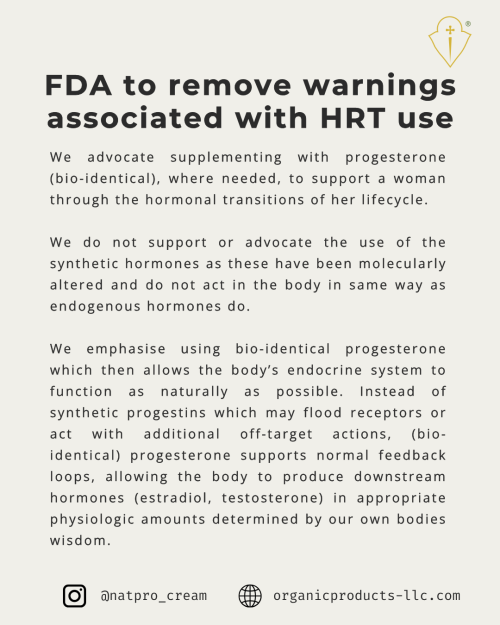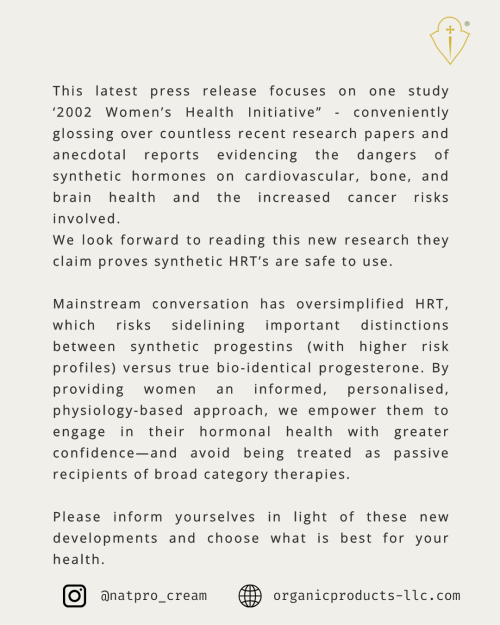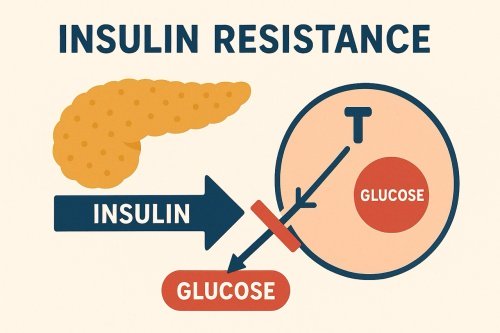Polycystic ovarian syndrome
Polycystic ovarian syndrome is the most prevalent reproductive problem in young girls and women, affecting between 5 to 10%.
Women with polycystic ovarian syndrome have...
- Insulin resistance, which in turn leads to weight gain, blood sugar problems, high triglycerides and high androgens
- A high blood sugar level leads to high insulin
- High insulin leads to high androgens
- High androgens lead to excess hair, weight problems, acne, suppression of ovarian function, leading to anovulation
- High triglycerides in turn lead to heart disease
- Progesterone levels are very low, as ovulation does not take place, so only half the cycle is being completed
- Often high cortisol and high homocysteine levels are found
- If the stress hormones cortisol and adrenaline rise, neurotransmitters and hormones drop They also have high levels of 5-alpha reductase, this converts oestrogen to androgens. Progesterone inhibits 5 alpha reductase.
If insulin resistance is reversed insulin levels drop, this in turn lowers androgen levels, which in turn prevents the suppression of ovarian function, allowing the ovaries to start functioning normally. Two studies have found that the B vitamin inositol helped control insulin resistance.
In a common treatment for polycystic ovarian syndrome women are given The Pill (to prevent ovulation) and Metformin, a diabetic drug, to bring the sugar level down.
The Pill contains synthetic progesterone and oestrogen, which also stops ovulation, but it also reduces the level of natural progesterone in a woman. It also has many adverse side affects. Synthetic progesterone or 'progestins' increase insulin resistance.
It is imperative that the insulin resistance is reversed
before ovarian function returns to normal.
Plan of action for polycystic ovarian syndrome...
- Reduce insulin levels - eat organic protein (with no growth hormones), avoid all starchy carbs, including fruit, eating only the non-starchy leaves, shoots, sprouts etc
- Reduce androgen levels - use progesterone and avoid all food which converts to glucose (as above), to reduce insulin, which causes androgens to rise
- Use between 200-250mg/day of progesterone cream such as Natpro (or one of equivalent strength), this helps stabilise blood sugar and suppresses androgen production. It also helps to correct ovarian malfunction
- The B vitamin inositol is essential for the reversal of insulin resistance
- The amino acid L-glutamine is very helpful. It's best dissolved in water and drunk throughout the day. The brain can use it in place of glucose for energy, so it stops all binging, tiredness, cravings for sugary foods and alcohol, it heals the lining of the gut, it boosts the immune system and is the most abundant amino acid in the muscles, so helping with muscle weakness
- The probiotics can be very helpful, take one which has at least 10 billion bacteria per dose
- Have a homocysteine test, if its high take...
- 150mg B2-riboflavin
- 75mg B6-pyrodoxine
- 1000mcg B12-cyanocobalamin
- 1200mcg Folic acid
- 3000mg TMG-tri-methyl glycine (anhydrous)
- 20mg Zinc
- the amino acids L-arginine, N-acetyl cysteine and L-lysine help too, especially with the triglycerides
- MCT oil (medium chain triglyceride) is a wonderful source of energy which is not converted to fat, but can be used directly by the cells for energy, take 5-60ml/day. It's extracted from coconut oil, which can also be used specially for cooking. MCT is 60% caprylic acid, which kills candida, and 40% capric acid
Additional information about polycystic ovarian syndrome...
Progesterone
Use 200-250mg/day of progesterone cream, this equates to 6.0-7.5ml Natpro. The higher dose might be needed. It must only be used at ovulation, for the last 14 days of the cycle, taking day 1 as the first day of bleeding.
Cycles can be very erratic or non-existent in PCO, if this is the case use a 28 day cycle to begin with, until the natural cycle exerts itself. This would mean using the cream from day 15 to 28.
Some authorities advise using the cream every day, without a break, to prevent any eggs from growing and maturing, as they only result in more cysts. If this route is followed, use half the daily dose given above for the first two to three months, a scan will confirm if the cysts are being absorbed back into the body.
After the two to three months of using the cream every day, start using the progesterone from day 14. This should prevent any further cysts developing and hopefully initiate ovulation.
If there is a cycle, but with spotting before a full period, between 6-7ml of progesterone cream such as Natpro (or one of equivalent strength) will be needed during the last 14 days, to prevent the spotting. The spotting is a sign that the progesterone level is dropping too low to support the endometrium.
For more on how to use progesterone cream click here.
Nutrients
The nutrients given below are to be taken daily in the appropriate proportions (to learn more about how to deal with polycystic ovarian syndrome and other conditions please click here). They all assist in...
- the insulin response
- reverse insulin resistance
- prevent tiredness and weight gain
- lower triglycerides
- assist in the energy transfer within the mitochondria
- cleansing the liver
- arginine
- carnitine
- cysteine (N-Acetyl-L)
- L-glutamine
- glycine
- isoleucine
- leucine
- taurine
- valine
- chromium amino acid chelate
- selenium
- zinc amino acid chelate
- vitamin B1
- vitamin B2
- vitamin B3
- vitamin B6
- vitamin B12
- biotin
- folic acid
- inositol
- ALA (alpha lipoic acid)
- CoQ10
- green tea extract (EGCG)
- milk thistle (82% silymarins)
Taking the probiotics Lactobacilus acidophilus and Bifidobacteria bifidum/lactis with at least ten billion bacteria per dose will greatly assist any regime aimed at overcoming polycystic ovarian syndrome.
MCT oil (medium chain triglyceride) is a wonderful source of energy which is not converted to fat, but can be used directly by the cells for energy, take 5-60ml. Please note it does have a laxative affect at high doses.
The soluble fibres such as apple pectin, guar and ground linseed are beneficial too, add them to drinks or food.
Very important: As homocysteine could be a contributing factor to polycystic ovarian syndrome, a blood test should be done to check. If higher than 6 then it is essential to take the following nutrients to help bring it down...
- 150mg B2-riboflavin
- 75mg B6-pyrodoxine
- 1000mg B12-cyanocobalamin
- 1200mcg folic acid
- 3000mg TMG-tri-methyl glycine (anhydrous)
- 30mg zinc.
 If you are feeling confused or overwhelmed by fertility challenges, or wondering if hormone balance might be affecting your ability to conceive you are not alone—many women and couples face uncertaint…
If you are feeling confused or overwhelmed by fertility challenges, or wondering if hormone balance might be affecting your ability to conceive you are not alone—many women and couples face uncertaint…
 _____
_____ Feeling tired, foggy, or struggling with stubborn weight gain—especially around the waist? You might be surprised to learn that these symptoms could be linked to insulin resistance, a condition that a…
Feeling tired, foggy, or struggling with stubborn weight gain—especially around the waist? You might be surprised to learn that these symptoms could be linked to insulin resistance, a condition that a…